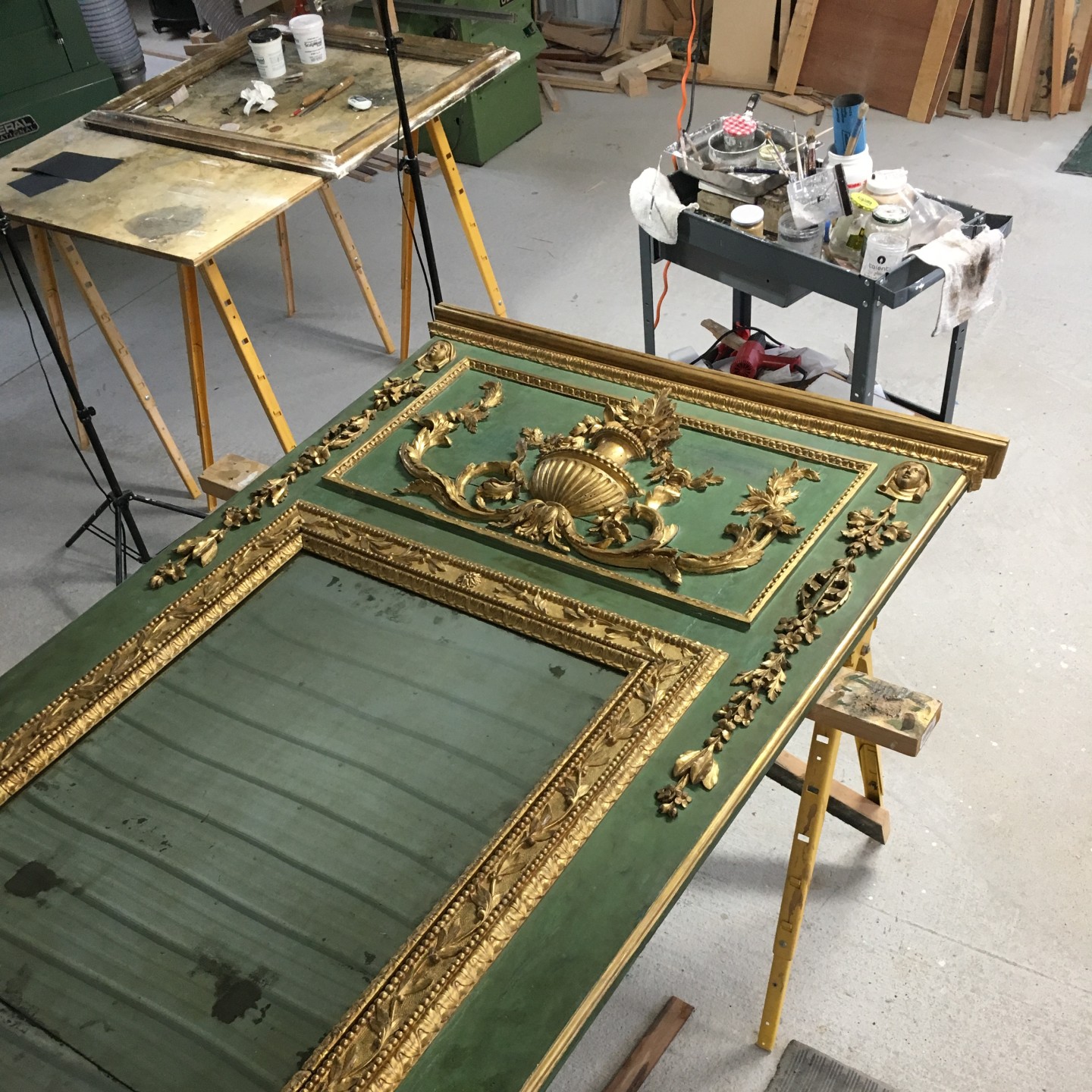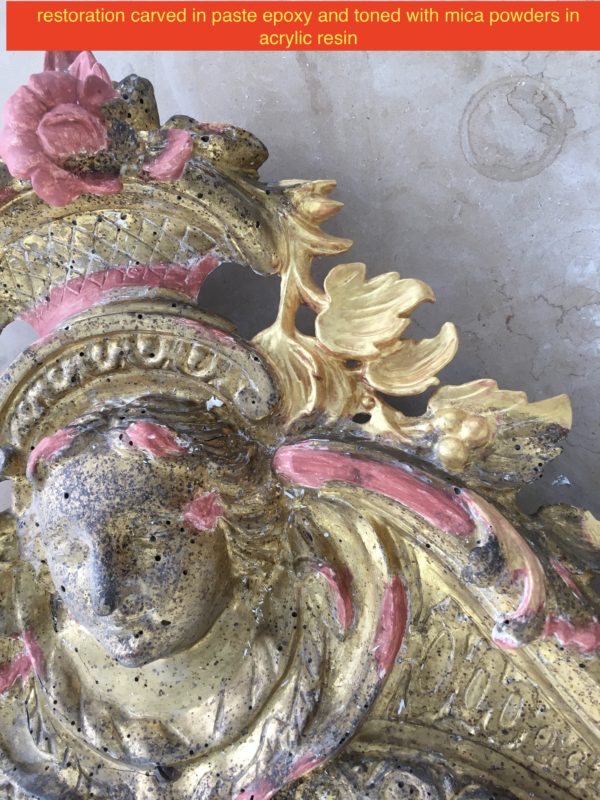
Furniture conservator Thomas Heller is a longtime friend and partner of Fine Art Shippers. In a recent conversation with us, he discussed his experience restoring wooden objects that were damaged during transit. In this interview, we explore the importance of using professional art shipping services when moving antique furniture pieces, the potential issues with regular commercial shippers, and the measures that can be taken to prevent damage to these valuable items.
Insights from a Furniture Conservator: Shipping Valuable Antiques
You recently had to restore antique furniture pieces that were damaged in transit. Please tell us more about them.
Thomas Heller: I restored two antique 17th-century European gilded mirrors that were damaged during transportation from Florida to Atlanta, Georgia, due to improper handling. Several sections of the frame ornament were missing, likely due to vibrations during transit. One of the mirrors had Phoenix birds flanking it, but the lower sections of their wings were completely broken, with some frame sections snapped off. Insect damage had also occurred, which further contributed to the instability of the mirror. Infestation and weakened structures are actually common problems with old furniture, especially European pieces.
Let’s discuss gilded wooden objects in particular. What makes them unique, and how can improper handling lead to damage?
Gilded wooden objects typically consist of a base layer of carved wood, a gesso layer to smooth it out, and a bole layer made of clay and animal glue. The gold leaf is then applied to the bole layer and burnished to create a dazzling shine. However, due to the use of different materials such as wood and gesso, these objects are susceptible to cracking or eggshell fracturing when bumped or subjected to other types of physical impact.
Can you describe your typical process for restoring gilded frames?
When restoring damaged gilded frames, I sometimes begin by using paste epoxy to fill losses in wood elements and then carve the epoxy to replicate the missing ornamentation. I also use traditional gesso, which is made of calcium carbonate and rabbit skin glue, to fill and match the surrounding gilded layer. To add color and tone, I apply mica powders or actual gold leaf, tinted with watercolors or acrylics. Depending on the object, I may also use abrasion techniques or carve wood to replicate a loss. Throughout the process, I focus on blending the restored areas seamlessly with the surrounding surfaces. I prefer to use traditional materials whenever possible.
What could you have done if you had received the mirrors before moving? How could you have protected them?
If I had received the mirrors before moving, I would have carefully examined them and consolidated any weak or unstable surfaces with animal glue or rabbit skin glue. I might have recommended moving them separately in a different truck or with different padding. The issue with commercial movers is that they often use moving blankets and shrink wrap, which can cause stress on fragile elements of a gilded frame with intricate carvings.
What would you recommend for owners of antique wooden items to consider when planning shipping?
In this case, I was surprised to learn from the insurer that they didn’t vet the movers. Despite being insured by a good company, the owner had to sue both the insurer and the movers to get the money to pay for my restoration work. Always buy insurance riders to cover valuable antiques during shipping unless the insurance fine arts policy covers items in shipment.
I would like to emphasize that it’s crucial to handle and pack gilded objects correctly to avoid damage during shipment. In almost all cases, mirrors should be crated. I’m curious if there are challenges in convincing clients to invest in more expensive packing methods to protect their valuable items. Even small bumps can cause significant damage, particularly to delicate or fragile areas. If conservators could assess these issues and recommend proper packing and stabilization measures before the move, everyone would benefit.
Fine Art Shippers specializes in providing transportation services for all kinds of art, including delicate objects and antique furniture. We understand the importance of careful handling and proper packing for valuable and fragile items. Our team of trained professionals has the skills and knowledge to handle even the most delicate and complex artworks with the utmost care and precision. To avoid the unfortunate situations we discussed in this article, please don’t hesitate to contact us for a consultation regarding your pieces and the best ways to ship them.
Photo courtesy of Thomas Heller, Heller Conservation Services


